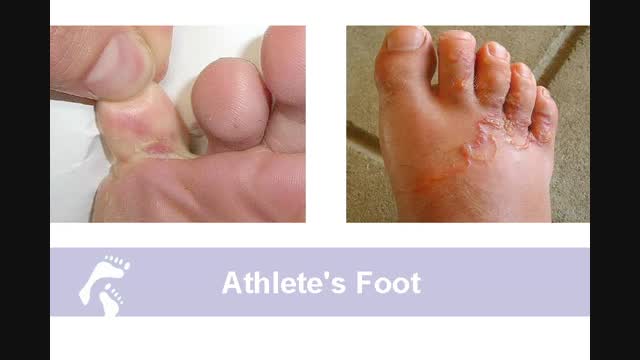
Fungi are an important, if gross, part of nature. They feed and thrive on breaking down moist organic material. You can find them just about anywhere, too—trees, basements, old food, and even in your shoes. As alarming as that may sound, your feet can quite easily pick up little microorganisms and develop unpleasant infections, like fungal nails and athlete’s foot.
Growing on Your Feet
Fungus is everywhere. It can affect you if your feet provide a naturally hospitable environment for the pathogens when you are exposed to them. Usually, the microorganism is from a family of fungi called dermatophytes, though sometimes yeast and mold can cause problems as well. If it gets under your toenails, you end up with a fungal nail infection. When it settles into the skin, you develop athlete’s foot.
These fungi cause an unpleasant problem. The microorganism multiplies rapidly under the hard tissue and damages the keratin, causing it to thicken and become brittle, discolored, and ragged. As the problem worsens, it can be uncomfortable and produce a foul odor. Fungus makes your feet itch. As the fungus breaks down your skin, it dries out, peels, and becomes inflamed, leaving you with flaky, painful feet. Occasionally, blisters develop. Any type of fungal infection is highly contagious, so it’s not uncommon to start with either condition and develop the other later.
Because the pathogen passes so easily from surface to surface, typically you pick it up in a public place or from another person who has the problem. Pools, spas, locker rooms, and saunas are all warm and damp, providing the ideal environment. The shoes, socks, towels, and even floors of another infected person may carry the fungus as well. When your own feet are sweaty and warm, especially if you spend most of your time wearing shoes, chances are high the problem will pass to you.
Eliminating the Invaders
Fungal nails and athlete’s foot are both conditions that need aggressive treatment to be eradicated. The organism will continue to grow on its own and cause increasing damage if you let it. Our doctors are specialists for dealing with this kind of embarrassing infection. Our expert staff will evaluate your feet and nails to determine the extent of the condition. We may scrape off a thin sample of the damaged skin or nail tissue to test for the specific pathogen, and then begin a regimen to eliminate the problem.
You have several options for treatment. What will help you the most largely depends on your unique body and situation. Topical anti-fungal medications are more effective for killing the microorganism on the surface of your skin than on your nails. Ointments, creams, powders, and sprays are all effective for destroying contaminants. These topical treatments can’t reach pathogens under your nails, though. Oral medicines take the anti-fungal treatment into your bloodstream. This allows the medication to target the problem directly. These medicines do have a variety of side effects, though, so you need to have your treatment monitored closely to catch complications. You’ll also need to take steps to eliminate the organisms festering in your footwear. Continuing to wear contaminated shoes re-exposes your feet to the infection and compromises treatment. Anti-fungal sprays, powders, and ultraviolet light therapies help destroy the problem and make your shoes safe again.
Laser therapy uses intense beams of light to vaporize the infected cells underneath the hard keratin. These procedures allow a healthy nail to grow in more quickly. The experienced doctors at Country Foot Care will help you to choose the treatment most suitable to foot & nail fungal infections.
Athlete’s foot and fungal nails are both common conditions that you can contract almost anywhere. Don’t wait for the problem to spread to seek help, though—the sooner you treat an infection, the quicker your success. To schedule an appointment to meet with the Country Foot Care doctors for an examination, there are two options available. You can call our offices to schedule an appointment or if you choose to make an appointment online you can do so using the MAKE AN APPOINTMENT button at the top of this page.
